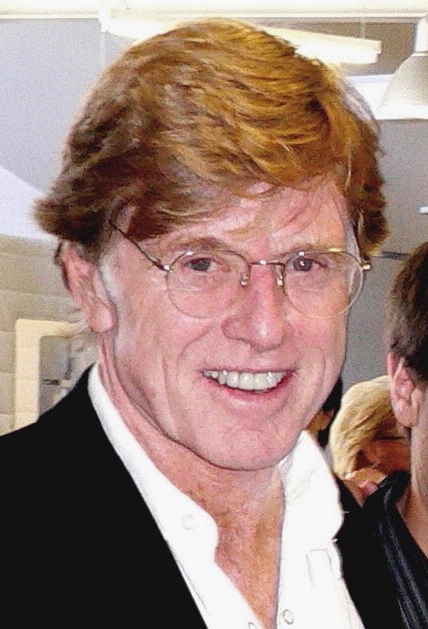
Have you ever pondered the hidden chapters in the lives of your favorite movie stars, musicians, and comedians? It’s a fascinating thought, isn’t it? Before the red carpets, the dazzling lights of Hollywood, and the roar of cheering crowds, many of these household names wore a different kind of uniform – that of military service. It’s a surprising testament to their dedication and a side of their stories often overshadowed by their later monumental achievements in entertainment.
Indeed, the journey from military barracks to the big screen is more common than you might imagine. From the hallowed battlefields of World War II to the strategic deployments of the Korean War and beyond, a significant number of beloved personalities possess a military history that profoundly shaped not only their individual character but also, in many subtle and direct ways, their careers. These experiences instilled discipline, resilience, and a unique perspective, providing a foundational bedrock for their future successes.
Join us as we embark on a fascinating exploration into the lives of some of these remarkable individuals. We’ll uncover their service stories, revealing how their time in uniform — whether building bridges, driving trucks, or training for combat — contributed to the legends they became. Prepare to be surprised by the untold courage and commitment of these stars before they graced our screens and stages.
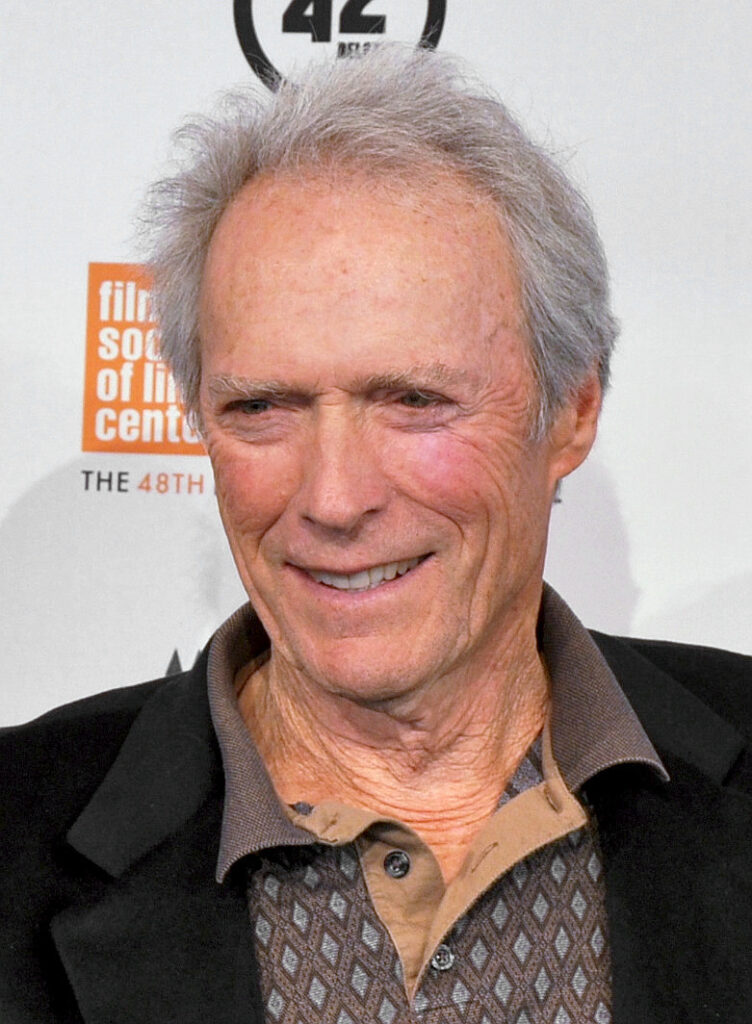
1. **Clint Eastwood: From Swimming Instructor to Screen Legend**Before he was the iconic tough-guy director and actor, Clint Eastwood quietly served his country during a pivotal moment in history. Drafted to serve during the Korean War from 1951 to 1953, Eastwood’s military tenure offered a glimpse into the discipline and duty that would later define his on-screen persona. His service was spent stateside, where he worked as a swimming instructor at Fort Ord in California.
This role, while seemingly far removed from the intensity of combat, was crucial for troop readiness and physical conditioning. It was during this period that his skills truly saved his life, as he survived a plane crash in the Pacific Ocean. This harrowing incident undoubtedly forged a deeper sense of resilience in the young Eastwood, shaping his perspective on life and survival.
Eastwood was honorably discharged in 1953, marking the end of his military obligations. His time in the Army, though not on the front lines, instilled a sense of order and practical application that benefited his filmmaking endeavors in the decades to come. It’s a compelling start to the story of a man who would become one of Hollywood’s most enduring figures.
Military equipment: Clint Eastwood
Name: Clint Eastwood
Caption: Eastwood in 2019
BirthName: Clinton Eastwood Jr.
BirthDate: [object Object]
BirthPlace: San Francisco, California, U.S.
Occupation: Actor,film director,producer
YearsActive: 1963–present
Organization: Malpaso Productions
Works: Clint Eastwood filmography,Clint Eastwood discography
Party: Libertarian Party (United States)
Otherparty: Republican Party (United States)
Spouse: Unbulleted list
Partner: Unbulleted list
Children: Kyle Eastwood,Alison Eastwood,Scott Eastwood
Awards: List of awards and nominations received by Clint Eastwood
Module: Infobox musical artist
Embed: true
Genre: Western music (North America),Country music,pop,jazz,western swing,film score
Label: Warner Records
Instrument: Vocals,piano
Module2: Infobox officeholder
Office: Carmel-by-the-Sea, California
TermStart: April 8, 1986
TermEnd: April 12, 1988
Predecessor: Charlotte Townsend
Successor1: Jean Grace
Module3: Listen
Signature: Signature of Clint Eastwood.svg
Categories: 1930 births, 20th-century American jazz composers, 20th-century American male actors, 20th-century American male musicians, 20th-century American politicians
Summary: Clinton Eastwood Jr. (born May 31, 1930) is an American actor and film director. After achieving success in the Western TV series Rawhide, Eastwood rose to international fame with his role as the “Man with No Name” in Sergio Leone’s Dollars Trilogy of spaghetti Westerns during the mid-1960s and as antihero cop Harry Callahan in the five Dirty Harry films throughout the 1970s and 1980s. These roles, among others, have made Eastwood an enduring cultural icon of masculinity. Elected in 1986, Eastwood served for two years as the mayor of Carmel-by-the-Sea, California.
Eastwood’s greatest commercial successes are the adventure comedy Every Which Way but Loose (1978) and its action comedy sequel Any Which Way You Can (1980). Other popular Eastwood films include the Westerns Hang ‘Em High (1968), The Outlaw Josey Wales (1976) and Pale Rider (1985), the action-war film Where Eagles Dare (1968), the prison film Escape from Alcatraz (1979), the war film Heartbreak Ridge (1986), the action film In the Line of Fire (1993), and the romantic drama The Bridges of Madison County (1995). More recent works include Gran Torino (2008), The Mule (2018), and Cry Macho (2021). Since 1967, Eastwood’s company Malpaso Productions has produced all but four of his American films.
An Academy Award nominee for Best Actor, Eastwood won Best Director and Best Picture for his Western film Unforgiven (1992) and his sports drama Million Dollar Baby (2004). In addition to directing many of his own star vehicles, Eastwood has directed films in which he did not appear, such as the mystery drama Mystic River (2003) and the war film Letters from Iwo Jima (2006), for which he received Academy Award nominations, as well as the legal thriller Juror #2 (2024). He also directed the biographical films Changeling (2008), Invictus (2009), American Sniper (2014), Sully (2016), and Richard Jewell (2019).
Eastwood’s accolades include four Academy Awards, four Golden Globe Awards, three César Awards, and an AFI Life Achievement Award. In 2000, he received the Italian Venice Film Festival’s Golden Lion award, honoring his lifetime achievements. Bestowed two of France’s highest civilian honors, he received the Commander of the Ordre des Arts et des Lettres in 1994, and the Legion of Honour in 2007.
Get more information about: Clint Eastwood
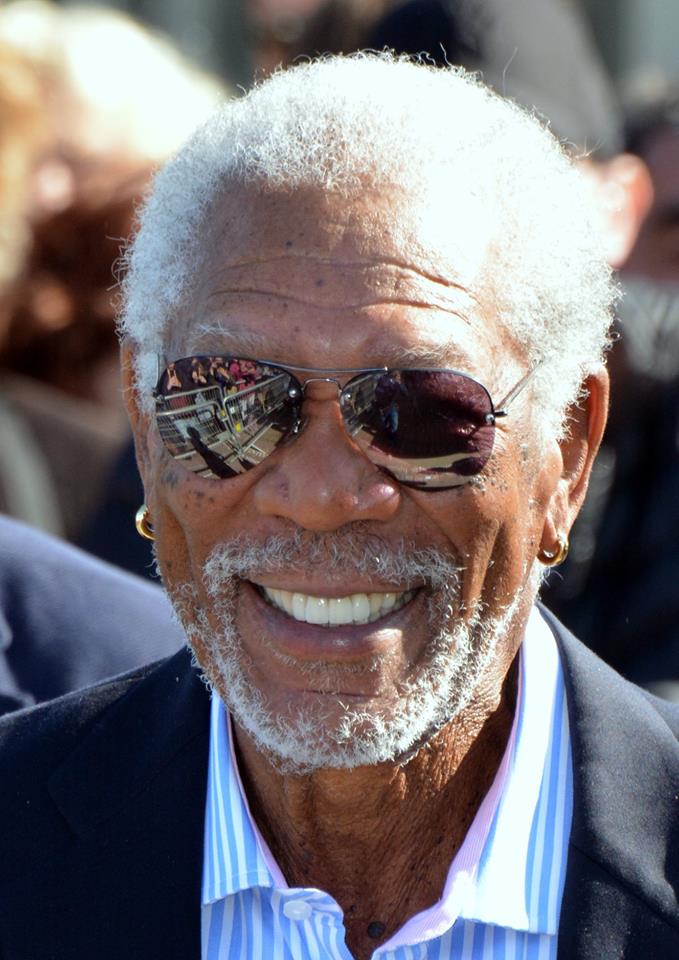
2. **Morgan Freeman: An Airman’s Unfulfilled Dream**Morgan Freeman’s distinctive voice and commanding presence have graced countless films, but before his rise to cinematic fame, he envisioned a different path: soaring through the skies. Freeman joined the Air Force in 1955 with aspirations of becoming a fighter pilot, a dream that captured his imagination and led him to enlist.
However, his military experience took an unexpected turn, not aligning with his high-flying ambitions. Instead of piloting aircraft, Freeman served as a radar technician and an Airman First Class. He was stationed at Keesler Air Force Base in Mississippi, where he diligently performed his duties from 1955 to 1959. This period taught him valuable lessons in perseverance and adaptability, qualities that would later become cornerstones of his acting career.
Ultimately, Freeman realized that flying was not his destined path. He departed the Air Force in 1959, choosing to pursue the craft of acting, where his powerful voice and captivating presence would find their true calling. His time in the military, though it didn’t lead to the cockpit, provided a solid foundation of discipline and an unexpected pivot point that launched him towards Hollywood stardom.
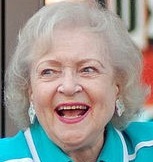
3. **Betty White: A World War II Truck Driver**Long before she became America’s beloved Golden Girl, a comedic icon known for her quick wit and infectious charm, Betty White answered the call of duty during a critical period in global history. In 1941, as the United States entered World War II, White offered her services by signing up for the American Women’s Voluntary Services (AWVS). Her commitment to her country was unwavering, even at a young age.
Her wartime contributions primarily involved practical, hands-on work essential to the war effort. White mostly worked as a truck driver, diligently delivering supplies to barracks situated across California. This role, far from the glamorous image she would later embody, showcased her down-to-earth nature and willingness to contribute wherever needed.
Her service highlights the widespread participation of women in supporting roles during World War II, enabling men to deploy overseas. Betty White’s quiet, yet significant, contribution as a truck driver remains a testament to her patriotic spirit, providing a fascinating glimpse into the formative experiences of a true American treasure before she enchanted millions on television.
Military equipment: Cannonball Run II
Name: Cannonball Run II
Caption: Drew Struzan
Director: Hal Needham
Producer: Albert S. Ruddy
Writer: Harvey Miller (screenwriter),Hal Needham,Albert S. Ruddy
Starring: Burt Reynolds,Dom DeLuise,Dean Martin,Sammy Davis Jr.,Jamie Farr,Marilu Henner,Telly Savalas,Shirley MacLaine,Susan Anton,Catherine Bach,Jackie Chan,Richard Kiel,Frank Sinatra
Music: Al Capps
Cinematography: Nick McLean
Editing: William D. Gordean,Carl Kress (film editor)
Studio: Orange Sky Golden Harvest
Distributor: Warner Bros. Pictures
Released: [object Object],[object Object]
Runtime: 108 minutes
Language: English,Cantonese
Country: United States,Hong Kong
Budget: US$
Gross: US$
Categories: 1980s American films, 1980s English-language films, 1980s Hong Kong films, 1980s comedy road movies, 1983 action comedy films
Summary: Cannonball Run II is a 1983 American action comedy film starring Burt Reynolds and an all-star cast, released by Warner Bros. and Golden Harvest. The film is the second installment of the Cannonball Run trilogy and a sequel to The Cannonball Run (1981). Like the first film, it is set around an illegal cross-country race, inspired by the real life Cannonball Baker Sea-to-Shining-Sea Memorial Trophy Dash.
This marked the final feature film appearances of Dean Martin and Frank Sinatra. Their appearances, coupled with those of Sammy Davis Jr. marked the final on-screen appearance of the Rat Pack team. The film also marked the final film appearance of Jim Nabors before his death in November 2017. The film also featured Jackie Chan in his third Hollywood role. The film was followed by a sequel, Speed Zone, in 1989.
Get more information about: Cannonball Run II
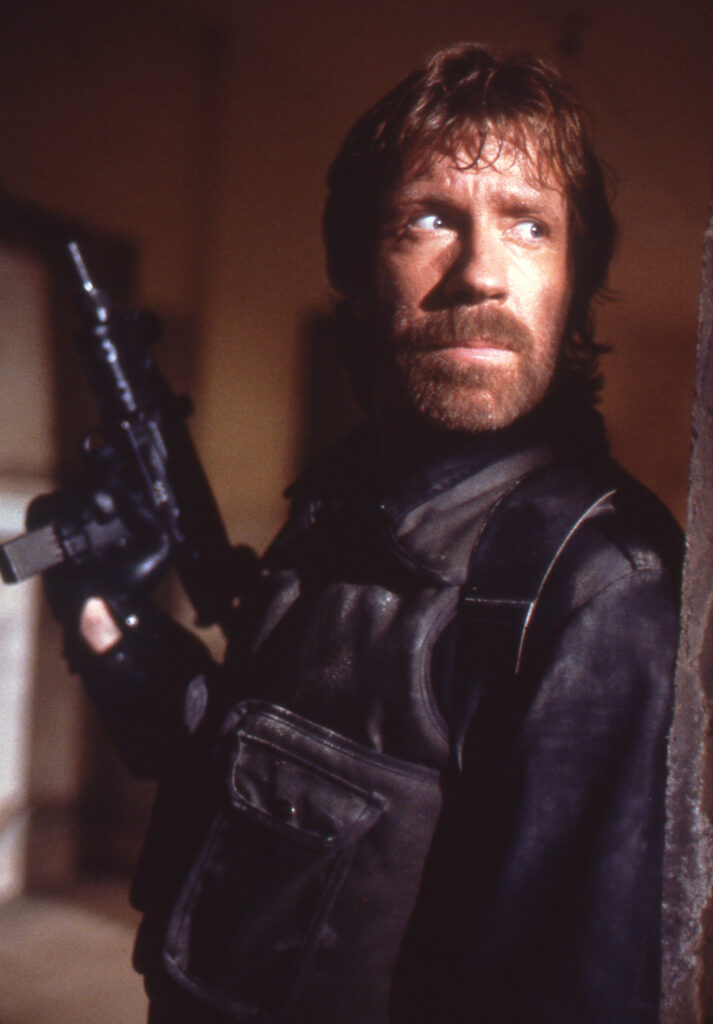
4. **Chuck Norris: The Martial Arts Origin in the Air Force**Before he became synonymous with unparalleled toughness and legendary feats, Chuck Norris forged his path in the United States Air Force. He enlisted in 1958, embarking on a military career that would last until 1962. His service took him to both Arizona and, significantly, South Korea, where his life would take a pivotal turn.
Norris served as an air policeman during his time in the military. This role required discipline, vigilance, and a strong sense of duty. It was during his stationing in South Korea that he was introduced to martial arts, a discovery that would irrevocably alter the course of his life and career. This initial exposure ignited a lifelong passion, laying the groundwork for his future as a martial arts champion and action film star.
His Air Force tenure provided the structured environment where his martial arts journey began, paving the way for his dynamic career in action films and television. The discipline and dedication honed in the military, combined with his burgeoning skills in martial arts, created the unstoppable force that Chuck Norris would become, forever cementing his status as a cultural icon.
Military equipment: Joe Lewis (martial artist)
Name: Joe Lewis
BirthName: Joseph Henry Lewis
BirthDate: [object Object]
BirthPlace: Knightdale, North Carolina
DeathDate: [object Object]
DeathPlace: Coatesville, Pennsylvania
Height: height
Weight: 195 lb
Abbr: on
Style: Shōbayashi Shōrin-ryū,Karate,Matsubayashi-ryū,Karate
Stance: Orthodox
Trainer: Seiyu Oyata,Ed Parker,Bruce Lee
YearsActive: 1965–2012
KickboxWin: 16
KickboxKowin: 14
KickboxLoss: 4
KickboxKoloss: 1
KickboxDraw: 1
Categories: 1944 births, 2012 deaths, 20th-century American sportsmen, All articles lacking reliable references, All articles with dead YouTube links
Summary: Joe Lewis (March 7, 1944 – August 31, 2012) was an American martial artist, professional kickboxer and actor. Originally a practitioner of Shōrin-ryū karate and champion in point sparring competitions, he became one of the fathers of full contact karate and kickboxing in the United States, and is credited with popularizing the combat sport in North America.
As a fighter, Lewis gained fame for his matches in the 1960s and 1970s, and was nicknamed “the Muhammad Ali of karate.” He has twice been voted the greatest fighter in karate history, having won several karate tournaments, and has attained the titles of “United States Heavyweight Kickboxing Champion,” “World Heavyweight Full Contact Karate Champion,” and “United States National Black Belt Kata Champion.” Though initially trained and primarily known as a karateka, Lewis cross-trained in several other martial arts, including Ryukyu Kenpo, boxing, judo, jeet kune do, tai chi, and folkstyle wrestling.
His friend and training partner Bruce Lee coined him “The Greatest Karate Fighter of All Time.” He was also named by the STAR System World Kickboxing Ratings as the “STAR Historic Undisputed Heavyweight World Champion” and is credited on their site as the “Father of Modern Kickboxing”. He competed professionally from 1965 to 1983, with a 16-4-1 record and 14 wins by knockout.
Get more information about: Joe Lewis (martial artist)
Read more about: Get Ready to Rewind: These 12 ’80s Icons Dominated Action and the Box Office Like No Other!
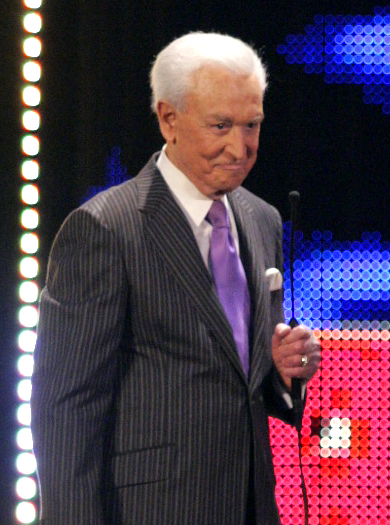
5. **Bob Barker: A Pilot’s Unflown Missions**For generations, Bob Barker was a beloved presence on television, famously inviting contestants to ‘come on down!’ But before his decades-long career as a game show host, Barker had prepared for a much different, and more dangerous, calling. He joined the United States Navy Reserve in 1943, during the height of World War II, ready to serve his nation.
Barker underwent rigorous training to become a fighter pilot, a demanding and perilous role in the global conflict. He dedicated himself to the intensive preparations required for combat missions, demonstrating a willingness to put his life on the line. The commitment to such a high-stakes endeavor speaks volumes about his character and patriotism.
However, fate intervened, and Barker never flew any combat missions. The war concluded before he could be deployed into active aerial combat. Despite not seeing battle, his readiness and dedication as a Navy Reserve pilot were an honorable part of his early life. This chapter underscores the broad impact of wartime service on an entire generation, even for those whose path didn’t lead to direct engagement.
Military equipment: List of fictional astronauts (Project Apollo era)
Categories: All articles with specifically marked weasel-worded phrases, Articles with short description, Articles with specifically marked weasel-worded phrases from July 2020, Dynamic lists, Lists of fictional astronauts
Summary: The following is a list of fictional astronauts from the era of the Apollo program and the early history of the Soyuz spacecraft, during the “Golden Age” of space travel.
Get more information about: List of fictional astronauts (Project Apollo era)

6. **Elvis Presley: The King’s Conscription**Even at the zenith of his musical fame, when his records topped the charts and his performances captivated millions, Elvis Presley answered the call of duty. In 1958, already a global sensation, Elvis was drafted into the U.S. Army. His decision to serve as an ordinary soldier, rather than seek preferential treatment, earned him immense respect from the public and his fellow servicemen.
He spent a significant portion of his service time stationed in Germany, where he continued to fulfill his military obligations without fanfare, just like any other soldier. This period saw him temporarily step away from the dazzling spotlight of entertainment, demonstrating a profound commitment to his country. His experiences in Germany were formative, personally and professionally.
Elvis remained in the Army Reserve until 1964, a testament to his continued dedication to his military commitments. His time in uniform solidified his image as a man of principle and patriotism, proving that even ‘The King’ was willing to serve. This period offers a unique perspective on the man behind the music, showcasing his discipline and humility away from the glitz and glamour of his musical career.
Military equipment: Conscription in the United States
Categories: All Wikipedia articles written in American English, All articles with failed verification, All articles with specifically marked weasel-worded phrases, All articles with unsourced statements, American nationalism
Summary: In the United States, military conscription, commonly known as “the draft”, has been employed by the U.S. federal government in six conflicts: the American Revolutionary War, the American Civil War, World War I, World War II, the Korean War, and the Vietnam War. The fourth incarnation of the draft came into being in 1940, through the Selective Training and Service Act; this was the country’s first peacetime draft.
From 1940 until 1973, during both peacetime and periods of conflict, men were drafted to fill vacancies in the U.S. Armed Forces that could not be filled through voluntary means. Active conscription in the United States ended in January 1973, and the U.S. Armed Forces moved to an all-volunteer military except for draftees called up through the end of 1972. Conscription remains in place on a contingency basis, however, in that all male U.S. citizens, even those residing abroad, and all male immigrants, whether documented or undocumented but residing within the United States, are required to register with the Selective Service System (SSS) between the ages of 18 and 25. Failure to register for the SSS, when otherwise required, can mean denial of many federal services, such as federal health care programs and eligibility for student loans. Conscription of 17-year-olds is optional and requires parental consent.
Conscription has faced strong opposition throughout American history from prominent figures like Daniel Webster, who stated, “A free government with an uncontrolled power of military conscription is the most ridiculous and abominable contradiction and nonsense that ever entered into the heads of men.”
Get more information about: Conscription in the United States
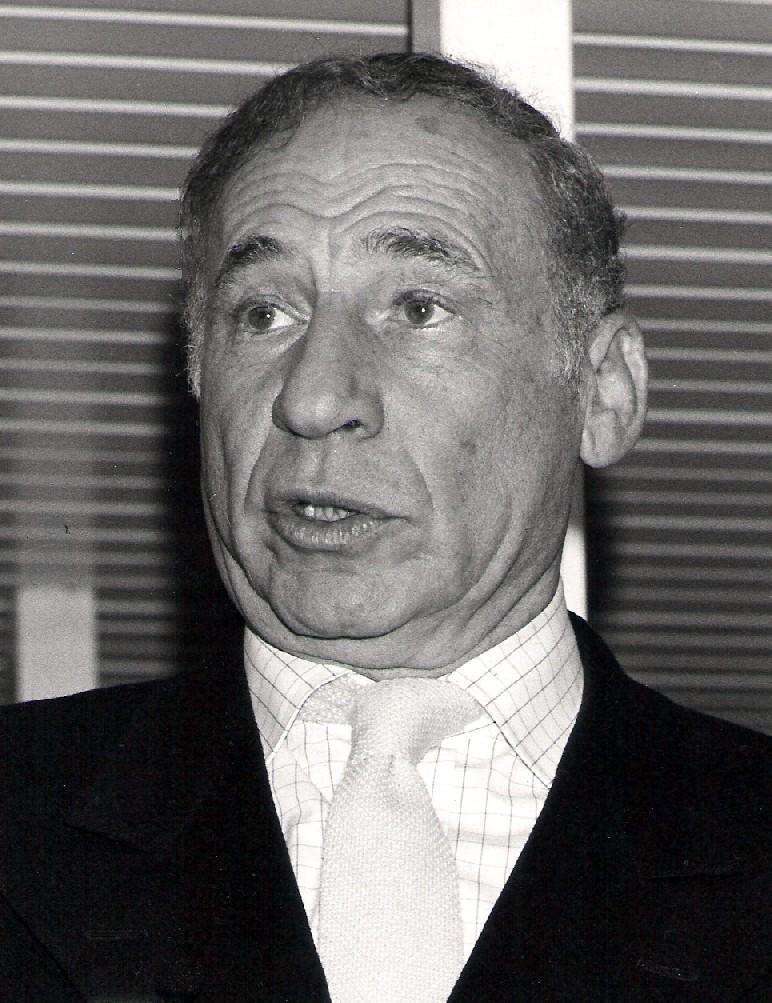
7. **Mel Brooks: A Combat Engineer’s Unexpected Path to Comedy**Mel Brooks, the comedic genius behind classics like “Blazing Saddles” and “The Producers,” had a remarkably serious and dangerous role before he ever made audiences laugh. He served in the U.S. Army during World War II, a period that deeply influenced his life and, in surprising ways, his comedic sensibility. Brooks was part of the 1104th Engineer Combat Battalion, a unit tasked with vital and hazardous duties.
During his time in Europe, Brooks was responsible for building bridges and, more critically, diffusing landmines. This perilous work required immense courage and precision, contrasting sharply with the chaotic humor he would later master. He also participated in one of the war’s most critical confrontations, the Battle of the Bulge, experiencing firsthand the grim realities of combat, mostly in Belgium.
Following his military service, Brooks began his journey in entertainment as a comedian in the Catskills. His wartime experiences, particularly his time defusing landmines, often informed his comedic style, especially in his film “The Twelve Chairs,” which drew inspiration from his time in Europe. It’s a testament to his resilience that such a grave experience could eventually fuel a career dedicated to laughter.
Now, let’s continue our journey, peeling back another layer of Hollywood’s surprising history to reveal seven more remarkable individuals whose paths to fame were paved, in part, by their unwavering commitment to serve. These untold tales offer further proof that the discipline, courage, and resilience forged in uniform often become the invisible bedrock of extraordinary civilian careers. From cartooning for military newspapers to commanding fellow soldiers, their foundational experiences left an indelible mark, shaping not just their characters, but the very essence of the legends they became. Prepare to be fascinated by the diverse military chapters that precede the stardom of these celebrated figures.
Military equipment: List of films with post-credits scenes
Categories: All articles needing additional references, All articles that may be too long, All articles with specifically marked weasel-worded phrases, All articles with unsourced statements, Articles needing additional references from July 2019
Summary: Many films have featured mid- and post-credits scenes. Such scenes often include comedic gags, plot revelations, outtakes, or hints about sequels.
Get more information about: List of films with post-credits scenes

8. **Hugh Hefner: From Sharpshooter to Publishing Pioneer**It might be hard to reconcile the image of Hugh Hefner, the sophisticated founder of the Playboy empire, with a military uniform, but indeed, before he launched his controversial and iconic magazine, Hefner served his country. Stationed at the end of World War II from 1944 to 1946, his role was far from the glamorous world he would later create: he worked diligently as an infantry clerk, contributing to the war effort in a vital administrative capacity.
While his military tenure was not one of combat, it was certainly formative. He even earned a training award for his sharpshooting prowess, a detail that sharply contrasts with his later public persona. This quiet yet disciplined period provided a structured environment that undoubtedly shaped the young Hefner, perhaps instilling the organizational skills and strategic thinking that would become crucial in building his publishing behemoth.
However, one of his most interesting contributions during his service was drawing cartoons for Virginia military newspapers. This creative outlet provided an early glimpse into his future in media. It allowed him to explore graphic design and communication, laying a subtle groundwork for his entrepreneurial journey into publishing, where he would eventually redefine magazine content and design.
This surprising chapter in Hefner’s life underscores how foundational experiences, even those seemingly mundane, can unexpectedly influence a future path. The discipline, the exposure to media through cartooning, and the observational skills honed in service undoubtedly played a part in preparing him for his groundbreaking leap into the publishing world, demonstrating that creativity and structure can indeed go hand in hand.
Military equipment: List of people from Illinois
Categories: All BLP articles lacking sources, All Wikipedia articles written in American English, Articles with short description, BLP articles lacking sources from May 2015, Dynamic lists
Summary: This is a list of notable individuals who come from the state of Illinois, a state within the larger United States of America.
Get more information about: List of people from Illinois

9. **Bob Ross: The Gentle Painter, The Tough Drill Sergeant**For millions, Bob Ross is synonymous with soothing tones, happy little trees, and the calmest presence imaginable. So, it comes as a profound surprise to learn that before he ever dipped a brush into liquid white on national television, Ross had a demanding and far less serene career: he served for 20 years in the United States Air Force. His military journey, which spanned the Vietnam War era, saw him take on roles as a fighter pilot, a test pilot, and remarkably, a drill sergeant.
These roles, especially that of a drill sergeant, paint a starkly different picture from the gentle artist we all know. Commanding troops, maintaining strict discipline, and pushing individuals to their physical and mental limits require an entirely distinct demeanor. It was a career filled with stress, pressure, and the necessity of being tough and direct, a stark contrast to his later, almost meditative, approach to painting.
Ross himself often spoke about this duality, revealing that the reason he cultivated such a calm and soft-spoken persona on his show was a direct reaction to his military life. He famously vowed that after two decades of “yelling and screaming” as a drill sergeant, he would never raise his voice again. This commitment to peace and tranquility became the hallmark of his artistic expression, a deliberate escape from the rigors of his past.
Yet, the discipline and methodical approach required in the military likely influenced his artistic technique, from the precise steps of his wet-on-wet painting method to his consistent messaging. His Air Force years, far from his artistic fame, were a crucible that forged a resilience and a deep appreciation for the peaceful escape that art offered. It’s a testament to the transformative power of a second calling, born from the very experiences that shaped his formidable character.
Military equipment: DDG 51 Arleigh Burke Class Destroyer
Manufacturer: Bath Iron Works, Huntington Ingalls Industries
The Arleigh Burke class employs all-steel construction and is comprised of three separate variants or “Flights”: DDG 51-71 represent the original design and are designated Flight I ships; DDG 72-78 are Flight II ships; DDG 79 and Follow ships are built or are being built to the Flight IIA design. The Flight III baseline is planned for the second ship in FY16.
A DDG modernization program is underway to provide a comprehensive mid-life upgrade that will ensure the DDG 51 class will maintain mission relevance and remain an integral part of the Navy’s Sea Power 21 Plan. The modernization changes are also being introduced to new construction ships to increase the baseline capabilities of the newest ships in the class, and to provide commonality between new construction ships and modernized in-service ships. The goal of the DDG modernization effort is to reduce workload requirements and increase war fighting capabilities while reducing total ownership cost to the Navy. In-service ships can be modernized by two distinct packages: Combat Systems (C/S) and Hull, Mechanical, and Electrical (HM&E) upgrades.
Additional upgrades include: Cooperative Engagement Capability (CEC), Evolved Sea Sparrow Missile (ESSM), CIWS Blk 1B, SEWIP, and NULKA. The Arleigh Burke-class MK-41 Vertical Launching System (VLS) will be upgraded to support SM-3 and newer variants of the SM missile family. Throughout their expected service life, DDG 51 destroyers will continue to provide multi-mission offensive and defensive capabilities with the added benefit of sea-based protection from the ballistic missile threat.
Categories: Destroyers, Navy Equipment, Navy Ships and Submarines, Ships and Submarines
Get more information about: DDG 51 Arleigh Burke Class Destroyer
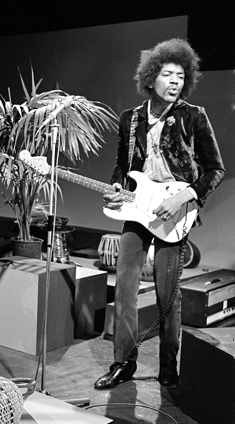
10. **Jimi Hendrix: A Paratrooper’s Brief but Intense Chapter**Before he became the iconic, electrifying guitarist who revolutionized rock music, Jimi Hendrix navigated a very different, structured world: the United States Army. His enlistment in 1961 was not born of patriotic fervor, but rather a stark choice presented by a judge after he was caught riding in a stolen car: join the Army or go to prison. He chose the uniform, embarking on a brief but undoubtedly intense chapter of his life.
Hendrix was assigned to the illustrious 101st Airborne Division, training as a paratrooper at Fort Campbell, Kentucky. This was no ordinary military service; becoming a paratrooper required immense physical stamina, mental fortitude, and a willingness to face extreme challenges, including jumping from planes. The rigorous training demanded strict discipline and precision, a stark contrast to the free-flowing, improvisational style that would later define his music.
However, his military career was short-lived. Hendrix received an honorable discharge after just one year, in 1962. Accounts vary, suggesting an ankle injury sustained during a parachute jump or being deemed “unsuitable for military service” due to his introverted nature and constant focus on his guitar. Regardless of the exact reason, this intense period of structured living and physical demand preceded his explosion onto the music scene.
Even a short stint in such a demanding environment could have profoundly shaped the young Hendrix. The discipline, the experience of being pushed to his limits, and the ultimate pivot away from that rigid structure likely fueled his desire for creative freedom and the boundless expression that his guitar provided. It’s a fascinating, foundational detail in the life of a legendary artist who would soon break all musical boundaries.
Military equipment: C-17 Globemaster III
Manufacturer: Boeing
Categories: Air Force Aircraft, Air Force Equipment, Military Aircraft, Transport Aircraft
Get more information about: C-17 Globemaster III
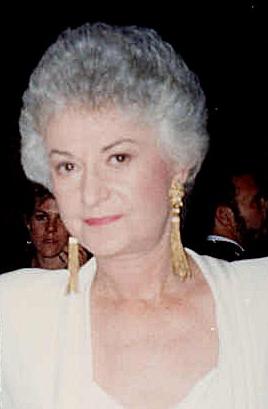
11. **Bea Arthur: The Golden Girl’s Groundbreaking Service**Bea Arthur, the incomparable actress known for her sharp wit and commanding presence as Maude Findlay and Dorothy Zbornak, possessed a depth of character that was perhaps forged long before her Hollywood fame. Before she graced our television screens, Arthur answered her country’s call during a pivotal moment in history, serving in the Marine Corps Women’s Reserve during World War II, a fact often overshadowed by her comedic genius.
Enlisting in 1943 at the age of 21, Arthur embraced her duties with dedication. She served in essential support roles, primarily as a typist and truck driver, tasks critical for the logistical functioning of military operations. Her commitment and capabilities quickly led to her promotion, and she rose to the rank of staff sergeant, demonstrating leadership and efficiency during her postings at Marine Corps and Navy air stations in Virginia and North Carolina.
Her service was part of a broader, groundbreaking movement as women stepped into uniformed roles to support the war effort, enabling more men to be deployed to combat zones. Bea Arthur was among the pioneering women who challenged traditional gender roles, performing vital work and proving their capabilities in a structured military environment. This experience undoubtedly instilled a profound sense of duty and resilience.
Upon her honorable discharge in 1945, Arthur pursued her passion for acting. It’s not difficult to imagine how the discipline, directness, and strong character traits honed during her time as a Marine staff sergeant seamlessly translated into the powerful, no-nonsense personas that made her an enduring comedic icon. Her military chapter was a truly formative experience, shaping the woman who would later entertain and inspire millions with her singular presence.
Military equipment: The Golden Girls
Genre: Sitcom
Creator: Susan Harris
Starring: Bea Arthur,Betty White,Rue McClanahan,Estelle Getty
ThemeMusicComposer: Andrew Gold
Opentheme: Thank You for Being a Friend
Endtheme: “Thank You for Being a Friend” (instrumental)
Composer: George Tipton
Country: United States
Language: English
NumSeasons: 7
NumEpisodes: 180
ListEpisodes: List of The Golden Girls episodes
ExecutiveProducer: Susan Harris,Paul Junger Witt,Tony Thomas (producer)
Camera: Videotape,Multiple-camera setup
Runtime: 22–24 minutes
Company: Witt/Thomas Productions,ABC Signature
Network: NBC
FirstAired: [object Object]
LastAired: [object Object]
Related: The Golden Palace,Empty Nest,Nurses (American TV series)
Categories: 1980s American multi-camera sitcoms, 1985 American television series debuts, 1990s American multi-camera sitcoms, 1992 American television series endings, Accuracy disputes from February 2020
Summary: The Golden Girls is an American sitcom created by Susan Harris that aired on NBC from September 14, 1985, to May 9, 1992, with 180 half-hour episodes, spanning seven seasons. The show’s ensemble cast stars Beatrice Arthur, Betty White, Rue McClanahan, and Estelle Getty. It is about four older women who share a home in Miami, Florida. It was produced by Witt/Thomas/Harris Productions, in association with Touchstone Television. Paul Junger Witt, Tony Thomas, and Harris served as the original executive producers.
The Golden Girls received critical acclaim throughout most of its run, and won several awards, including the Primetime Emmy Award for Outstanding Comedy Series twice. It won three Golden Globe Awards for Best Television Series – Musical or Comedy. Each of the four stars received an Emmy Award, making it one of only four sitcoms in the award’s history to achieve this. The series ranked among the Nielsen ratings’ top ten for six of its seven seasons.
In 2013, TV Guide ranked The Golden Girls number 54 on its list of the 60 Best Series of All Time. In 2014, the Writers Guild of America placed the sitcom at number 69 in their list of the “101 Best Written TV Series of All Time”. Terry Tang of the Associated Press reported that the series continues to attract new fans in the 21st century and characterized it as an example of a sitcom that has aged well.
Get more information about: The Golden Girls
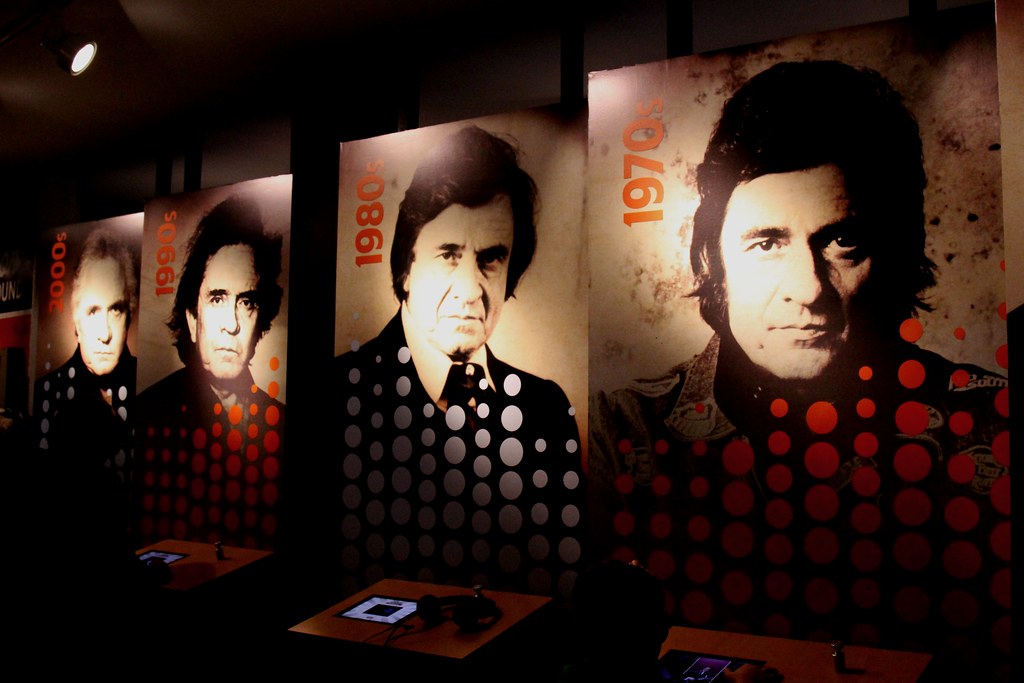
12. **Johnny Cash: The Man in Black’s Air Force Roots**Johnny Cash, the legendary “Man in Black,” whose deep voice and poignant lyrics resonated with generations, embarked on his extraordinary musical journey not from a dusty roadside or a small-town honky-tonk, but from the structured environment of the United States Air Force. His military service, undertaken before he found fame, played a pivotal and direct role in the genesis of his iconic sound.
Cash enlisted in 1950, amidst the Korean War, and served his nation as a Morse code operator. Stationed in Landsberg, West Germany, he was part of an intelligence unit whose crucial task was to intercept Soviet military communications. This demanding role required immense focus, discipline, and a keen ear, skills that subtly prepared him for the precision and storytelling inherent in his later songwriting.
It was during these years overseas that the seeds of his musical genius began to sprout. While serving in Germany, Cash famously penned some of his earliest songs, including the timeless classic, “Folsom Prison Blues.” The inspiration for this dark, narrative song reportedly came from watching a film titled “Inside the Walls of Folsom Prison” while off duty, demonstrating how even mundane moments in his military life fueled his creative output.
After his honorable discharge in 1954, Cash fully committed to his music career. The discipline and unique life experiences gained during his Air Force years, coupled with the creative impulse that first sparked in Germany, provided a rich wellspring for his lyrics and a solid foundation for his remarkable career. His military roots are truly embedded in the very essence of the legendary artistry he shared with the world.
Military equipment: Johnny Cash
Name: Johnny Cash
Caption: Cash in 1979
OtherNames: “Man in Black”,John R. Cash
BirthName: J. R. Cash
BirthDate: [object Object]
BirthPlace: Kingsland, Arkansas
DeathDate: [object Object]
DeathPlace: Nashville, Tennessee
RestingPlace: Hendersonville Memory Gardens
Occupation: Singer,songwriter,musician,actor
YearsActive: 1954–2003
Spouse: [object Object],[object Object]
Children: Rosanne Cash,Cindy Cash
Relatives: Tommy Cash
Website: johnnycash.com
Module: Infobox military person
Embed: true
Allegiance: United States
Branch: United States Air Force
Rank: Staff sergeant
Serviceyears: 1950–1954
Module2: Infobox musical artist
Background: solo_singer
Genre: Country music
Instrument: Vocals,guitar,harmonica
Discography: Johnny Cash albums discography,Johnny Cash singles discography,List of songs recorded by Johnny Cash
Label: Sun Records,Columbia Records,Mercury Records,American Recordings (record label),House of Cash,Legacy Recordings
PastMemberOf: The Highwaymen (country supergroup)
Categories: 1932 births, 2003 deaths, 20th-century American guitarists, 20th-century American male actors, 20th-century American male singers
Summary: John R. Cash (born J. R. Cash; February 26, 1932 – September 12, 2003) was an American singer-songwriter. Most of his music contains themes of sorrow, moral tribulation, and redemption, especially songs from the later stages of his career. He was known for his deep, calm, bass-baritone voice, the distinctive sound of his backing band, the Tennessee Three, that was characterized by its train-like chugging guitar rhythms, a rebelliousness coupled with an increasingly somber and humble demeanor, and his free prison concerts. Cash wore a trademark all-black stage wardrobe, which earned him the nickname “Man in Black”.
Born to poor cotton farmers in Kingsland, Arkansas, Cash grew up on gospel music and played on a local radio station in high school. He served four years in the Air Force, much of it in West Germany. After his return to the United States, he rose to fame during the mid-1950s in the burgeoning rockabilly scene in Memphis, Tennessee. He traditionally began his concerts by introducing himself with “Hello, I’m Johnny Cash”. He began to follow that by “Folsom Prison Blues”, one of his signature songs. His other signature songs include “I Walk the Line”, “Ring of Fire”, “Get Rhythm”, and “Man in Black”. He also recorded humorous numbers like “One Piece at a Time” and “A Boy Named Sue”, a duet with his future wife June called “Jackson” (followed by many further duets after they married), and railroad songs such as “Hey, Porter”, “Orange Blossom Special”, and “Rock Island Line”. During his final years, Cash covered songs by contemporary rock artists; among his most notable covers were “Hurt” by Nine Inch Nails, “Rusty Cage” by Soundgarden, and “Personal Jesus” by Depeche Mode.
Cash is one of the best-selling music artists of all time, having sold more than 90 million records worldwide. His genre-spanning music embraced country, rock and roll, rockabilly, blues, folk, and gospel sounds. This crossover appeal earned him the rare honor of being inducted into the Country Music, Rock and Roll, and Gospel Music Halls of Fame. His life and career were dramatized in the 2005 biopic Walk the Line.
Get more information about: Johnny Cash
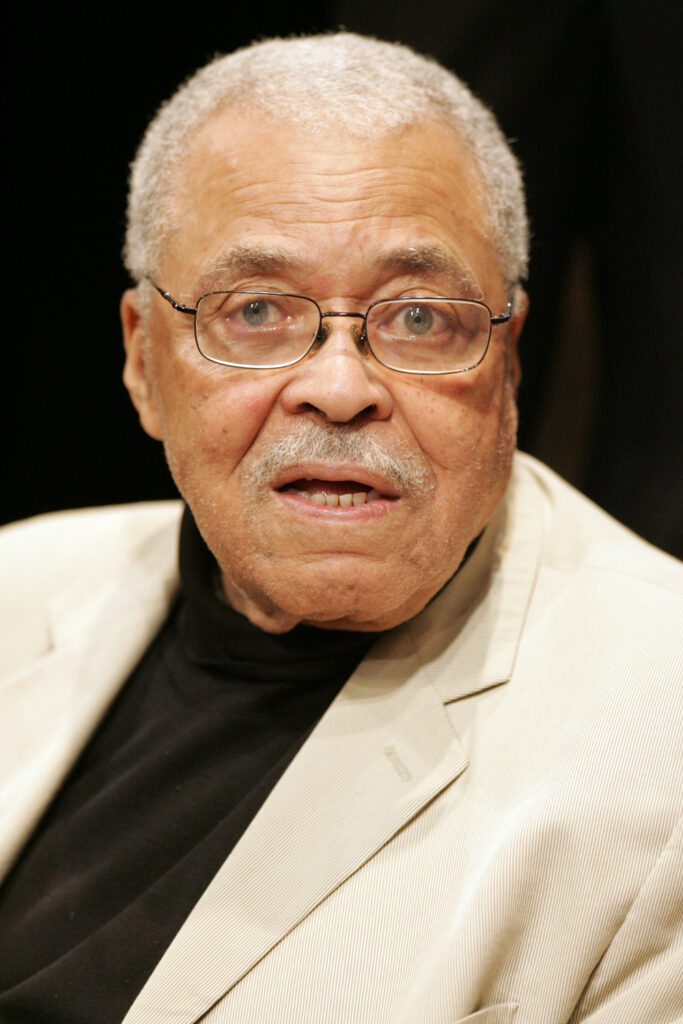
13. **James Earl Jones: The Voice of Command, Forged in the Army**James Earl Jones, whose deep, resonant voice became one of the most recognizable and commanding in cinematic history, had a profound military chapter before his rise to stardom. Prior to lending his authoritative voice to characters like Darth Vader and Mufasa, Jones served in the U.S. Army during the Korean War era, an experience that he himself credited with shaping his self-assurance and powerful presence.
Commissioned as a first lieutenant, Jones’s military career was marked by a particularly demanding role: he served as a Ranger instructor at Camp Hale, Colorado. This position required exceptional leadership, physical prowess, and the ability to command respect and impart critical survival and combat skills to aspiring elite soldiers. It was a crucible of discipline, mental toughness, and vocal authority, demanding absolute conviction in his instructions.
This intense period of training and leadership proved to be incredibly formative for the young Jones. He openly spoke about how his time as a Ranger instructor, where he had to project confidence and clarity in high-pressure situations, directly enhanced his self-assurance and the powerful vocal delivery that would become his trademark. These qualities, honed in the challenging environment of military instruction, translated seamlessly into his acting career.
His military background imbued him with a unique gravitas and an unparalleled ability to embody characters of immense authority and presence. The discipline and the profound sense of self-belief cultivated in the Army provided a sturdy foundation for his artistic endeavors, proving that the skills learned in uniform can profoundly shape a performer’s ability to command an audience, making his voice truly legendary.
Military equipment: 10th Mountain Division
UnitName: 10th Mountain Division
Caption: Shoulder sleeve insignia
Country: Flagu
Branch: army
Type: Brigade combat team#Infantry brigade combat team
Dates: 1943–1945,1948–1958,1985–present
CommandStructure: Flagicon image,XVIII Airborne Corps (United States)
Size: Division (military)#United States
CurrentCommander: Major General (United States)
Commander2: Brigadier General (United States)
Commander2Label: Deputy Commanding General – Operations
Commander3: Colonel (United States)
Commander3Label: Deputy Commander – Readiness
Commander4: Command Sergeant Major
Commander4Label: Command Sergeant Major
Garrison: Fort Drum
Nickname: The Mountaineers
Motto: “Climb to Glory”
Colors: Red and Blue
Battles: Operation Encore
NotableCommanders: George Price Hays,James Edward Moore,Thomas Leonard Harrold,Philip De Witt Ginder,Barksdale Hamlett,James L. Campbell,Franklin L. Hagenbeck,Lloyd Austin,Benjamin Freakley,Michael L. Oates,James L. Terry,Mark A. Milley
IdentificationSymbol: File:10th Mountain Division DUI.png
IdentificationSymbolLabel: Distinctive unit insignia
IdentificationSymbol2: File:Patch of the 10th Mountain Division (Scorpion W2).png
IdentificationSymbol2Label: Subdued shoulder sleeve insignia worn on OCP-ACU
IdentificationSymbol3: File:10th Mountain Division CSIB.jpg
IdentificationSymbol3Label: Combat service identification badge
IdentificationSymbol4: File:Flag of the U.S. Army 10th Mountain Division.svg
IdentificationSymbol4Label: Division flag
IdentificationSymbol5: Mil Map Symbol
UnitShortName: 10
UnitIcon: Military Symbol – Friendly Unit (Solid Light 1.5×1 Frame)- Infantry – Light Infantry (NATO APP-6A).svg
UnitSizeIcon: NATO Map Symbol – Unit Size – Division.svg
IconSize: 100
IdentificationSymbol5Label: NATO Joint Military Symbology
Categories: 10th Mountain Division (United States), All articles lacking reliable references, All articles needing additional references, All articles with unsourced statements, Articles lacking reliable references from January 2024
Summary: The 10th Mountain Division (Light Infantry) is a light infantry division in the United States Army based at Fort Drum, New York. Formerly designated as a mountain warfare unit, the division was the only one of its size in the U.S. military to receive specialized training for fighting in mountainous conditions. More recently, the 10th Mountain has advised and assisted Iraqi Security Forces in Iraq and People’s Defense Units in Syria.
Originally activated as the 10th Light Division (Alpine) in 1943, the division was redesignated the 10th Mountain Division in 1944 and fought in the mountains of Italy in some of the roughest terrain in World War II. On 5 May 1945, the division reached Nauders, Austria, just beyond the Reschen Pass, where it made contact with German forces being pushed south by the U.S. Seventh Army. A status quo was maintained until the enemy headquarters involved had completed their surrender to the Seventh. On 6 May, 10th Mountain troops met the 44th Infantry Division of Seventh Army.
Following the war, the division was deactivated, only to be reactivated and redesignated as the 10th Infantry Division in 1948. The division first acted as a training division and, in 1954, was converted to a full combat division and, in 1955, was sent to Germany before being deactivated again in 1958.
Reactivated again in 1985, the division was designated the 10th Mountain Division (Light Infantry) to historically tie it to the World War II division and to also better describe its modern disposition. Since its reactivation, the division or elements of the division have deployed numerous times. The division has participated in Operation Desert Storm (Saudi Arabia), Hurricane Andrew disaster relief (Homestead, Florida), Operation Restore Hope and Operation Continue Hope (Somalia), Operation Uphold Democracy (Haiti), Operation Joint Forge (Bosnia and Herzegovina), Operation Joint Guardian (Kosovo), and several deployments as part of the Multinational Force and Observers (Sinai Peninsula).
Since 2002, the 10th Mountain Division has been the most deployed regular Army unit. Its combat brigades have seen over 20 deployments, to both Iraq and Afghanistan, in support of Operation Iraqi Freedom and Operation Enduring Freedom.
Get more information about: 10th Mountain Division

14. **Adam Driver: From Marine to Method Actor**Adam Driver, a defining actor of his generation known for his intense performances and profound dedication to his craft, carries a deeply personal and formative military history that underpins much of his approach to acting. Before he became a Hollywood star, Driver answered a profound call to serve, enlisting in the U.S. Marine Corps shortly after the tragic events of September 11, 2001.
Driver served with commitment and distinction for over two years, reaching the rank of Lance Corporal. His dream was to deploy to Iraq, but a mountain biking accident resulted in a medical discharge, preventing him from seeing combat alongside his unit. Despite this early end to his active service, his time in the Marines left an indelible mark, shaping his character and instilling a profound sense of discipline and camaraderie.
Driver frequently speaks about the transformative impact of his military experience on his work ethic and his rigorous method acting style. The Marines instilled in him an unparalleled discipline, a profound understanding of teamwork, and an ability to push through physical and mental challenges – qualities that are now foundational to his immersive performances. He attributes much of his professional drive to his military training.
This unique background gives Driver an authenticity and gravitas that sets him apart in the entertainment industry. His understanding of duty, sacrifice, and the bonds forged under pressure undoubtedly informs the complex characters he portrays, bringing a raw, grounded truth to his roles. It also makes him a passionate advocate for veterans’ causes, continually bridging the gap between service and the arts.
Driver’s journey from a dedicated Marine, prepared for combat, to an acclaimed actor, celebrated for his intensity, powerfully illustrates how foundational experiences, even those cut short, can profoundly shape an individual’s path to greatness, imbuing their later endeavors with an unparalleled depth and commitment. It’s a testament to how the structured world of the military can prepare a person for the equally demanding, albeit different, world of Hollywood.
These stories of discipline, courage, and unexpected paths offer a compelling glimpse into the foundational experiences that shaped these celebrities. Far from the glamour of their later careers, their military service instilled enduring qualities – resilience, leadership, and a unique perspective – that undoubtedly fueled their rise to stardom. It’s a powerful reminder that behind every famous face, there might just be a surprising and truly honorable chapter of service to country, proving that greatness can indeed emerge from the most structured and demanding of environments, preparing them for the unexpected battles and triumphs of Hollywood and beyond.”
},
Military equipment: List of United States Marines
Categories: All Wikipedia articles written in American English, All articles with dead external links, Articles with dead external links from April 2025, Articles with dead external links from December 2017, Articles with dead external links from June 2016
Summary: The following is a list of people who served in the United States Marine Corps and have gained fame through previous or subsequent endeavors, infamy, or successes. Marines who became notable in the United States Marine Corps and are part of the Marine Corps history and lore are listed and posted in the list of historically notable United States Marines.
Get more information about: List of United States Marines
{“_words_section2”: “1738



